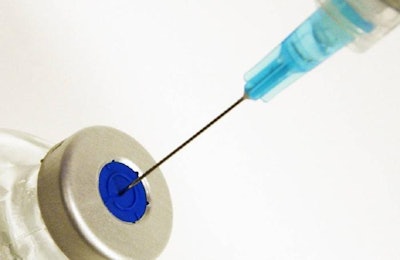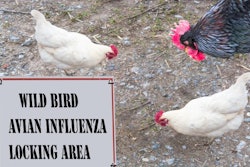
The latest results from tests on a new vaccine against avian flu promise improved control of the disease, reports the Pirbright Institute in the United Kingdom (U.K.).
Not only does this possible future vaccine initiate a fast immune response, it also reduces the level of virus the birds pass on to others. As a result, it protects vaccinated birds from the infection, and lowers the risk of transmission to others. Furthermore, the vaccine is easier and cheaper to produce as it does not need to be made using chicken eggs.
According to the Institute, this is the first successful attempt to tag flu virus hemagglutinin (HA) protein with a marker. This development makes them easier for the bird’s immune cells to capture, enhancing the immune response as well as reducing viral shedding into the environment.
“By targeting HA to chicken immune cells, we have generated a powerful addition to the armory of poultry vaccines,” said Professor Munir Iqbal, Head of the Institute’s Avian Influenza Virus group. “Our improved vaccine could help prevent the spread of flu amongst vaccinated birds, which is essential for protecting poultry welfare, increasing food production, and reducing the risk of avian influenza spreading to humans.”
Furthermore, the new vaccine offers other potential advantages regarding safety. It does not contain live flu virus, and specialist high containment facilities are not necessary for its manufacture.
New avian flu outbreaks in European poultry flocks
During the first week of this month, the H5N8 HPAI virus was detected in a poultry flocks in East Flanders province in northern Belgium. According to the official report to the World Organisation for Animal Health (OIE), 45 birds were affected — a hobby flock of chickens — in the town of Moerzeke. Twenty of the birds died, and the rest have been destroyed.
Set up around the affected premises were a 500-meter temporary buffer zone, a 3-kilometer protection zone, and a 10-kilometer surveillance zone, reported the Federal Agency for the Safety of the Food Chain, FAVV-AFSCA.
News of the latest cases came within one week of the lifting of restrictions put in place in connection to an earlier H5N8 HPAI outbreak in the province of Hainaut in Belgium’s Walloon region.
Since November of 2020, highly pathogenic H5 virus has been detected at seven locations in Belgium, according to this source. These included two farms, a bird trader, and four private poultry owners. In December of last year, poultry at one Belgian farm tested positive for a low-pathogenic avian influenza virus of the H5 type.
In the Balkan state of Albania, local media are reporting further cases of HPAI in poultry. According to Exit, 130 poultry have been culled at a farm at Barbullush in the northern region of Shkoder.
Albania's first cases of HPAI were detected at the end of May. Since then, four outbreaks have been registered with the OIE. Involving a total of more than 4,500 poultry, the outbreaks occurred in four of the nation’s other counties.
Avian flu situation resolved in Belgium, the Netherlands
Over the past week, the veterinary authority of Belgium has reported to the OIE that the H5N5 HPAI situation has been resolved. Directly affecting total of almost 179,000 poultry, this virus was detected at two farms in the same district of West Flanders. The more recent outbreak was in January this year.
In the Netherlands, all HPAI-related restrictions were lifted last week. This marked 28 days since the final round of cleaning and disinfection at the premises where the H5N8 HPAI virus was most recently detected.
Since October of last year, Dutch authorities registered 11 HPAI outbreaks in poultry with the OIE. These directly involved a total of more than 514,000 birds as a result of mortality or culling to prevent further spread of the infection.
Over the past week, national veterinary authorities of Slovakia and the U.K. have reported to the OIE that there have been no new cases of avian flu in their respective poultry populations.
Overview of the avian flu situation in European poultry, birds
Latest data from the Animal Disease Information System of the European Commission (EC) puts the number of HPAI outbreaks in Europe so far this year at 1,168. This is according to the latest update dated July 11.
So far this year, 19 countries have reported one or more cases through this system. Only two — Denmark and France — have confirmed new outbreaks this month.
Among the wild bird population, total HPAI outbreaks have reached 1,651 for the year to July 11, according to the EC system. These covered 28 countries.
Reporting new cases in wild birds in July so far have been Finland, Germany, Norway, and Sweden.
Russia is not monitored by the EC system. Last week, the veterinary authority registered with the OIE further mortalities related to an earlier HPAI outbreak linked to the H5N1 virus variant. Total number of pelicans found dead at a natural park in the Armizonsky district of Tyumen oblast had risen to 86.
Located in the Urals federal district, Tyumen oblast is the location of another recent HPAI outbreak, which affected backyard poultry during the first week of July.
Earlier this month, new HPAI outbreaks in poultry were reported at a Danish farm, and in a non-commercial flock in France.
View our continuing coverage of the global avian influenza situation.

















